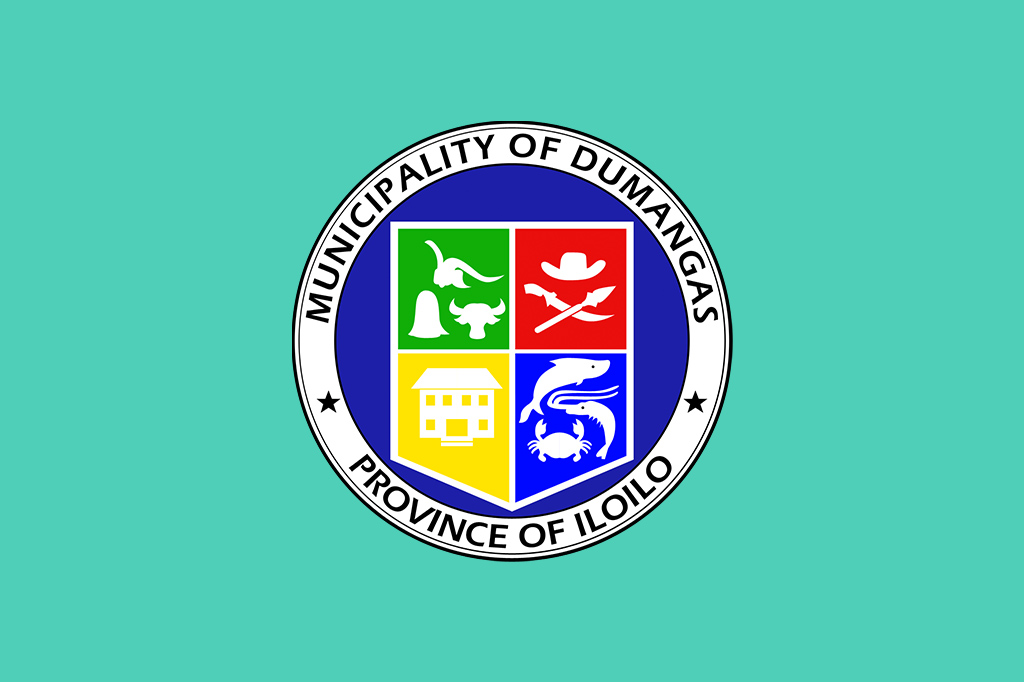
History of Dumangas, Iloilo
THE EARLY SETTLEMENT
The present town of Dumangas started as a settlement of Malays who made a clearing along the Talauguis river and established a community sometime in the 12th or 13 century. They called the community Araut, a name derived from the Malayan dialect raut meaning sea or pa-raut which means toward the sea. When the Spaniards arrived in Panay, they found the coastal village of Araut, a thriving agricultural community.
During the first few years of Spanish colonization of the Philippines, the Spaniards established their first settlement in Cebu. The island of Cebu had a shortage of food provisions to support them. Thus, the commander of the group, Miguel Lopez de Legazpi, sent various expeditions to look for food, leading them to Panay island…
“…lack of provisions in Cebu, Legazpi sent Mateo del Sanz to look for food. He landed in Araut in June of 1565…found many provisions and the inhabitants hospitable…”
The colonizers were able to get enough food supplies and they went back to Cebu to report to Legazpi what they had found.
HISPANIZATION AND CONVERSION TO ROMAN CATHOLICISM In June 1569, Capitan Luis de la Haya left Cebu for Araut. With him was Fray Juan de Alva, an Augustinian friar ordered by his superiors to preach and convert the people of Araut to Christianity. The inhabitants then were animistic believers. Like other pre-hispanic Filipinos, they worshipped environmental spirits, but Fray de Alva did not find much difficulty in converting the natives to the new faith. Of the early Augustinian fathers who came to Panay, he was the first to learn the native tongue which was Kinaray-a, hence and as such he can relate to the people easily. Shortly, he was able to initiate the construction of a church with the help of the converts in 1572.
In the 16th century, Araut gained prominence, being the first community trodded by the Spaniards when they came to Panay. It was also the first town in Panay to receive the blessings of Christianity and the “first to erect a catholic temple.” Under the Augustinian leadership, Araut enjoyed quite an invariable prestige due its wide jurisdiction. Aside from Guimaras which was one of its Parishes, the areas now occupied by the towns of Barotac Nuevo, Anilao, Banate, Dingle, Zarraga, Pototan, Mina, Janiuay, Dueñas, and as far as Maasin were also under its jurisdiction.
In 1605, 33 years after it was established as a town (founded in 1572) the Spanish clergy, who then ruled the community together with cabezas de barangay, changed the name Araut to Dumangas. Local stories written regarding the origin of the name of the town stated that a Spaniard resting under two closely growing mango trees asked a native for the name of the place. Thinking that he was asked the name of the trees under which the Spaniard was resting, he answered in crude Spanish “dos manggas,” meaning two mango trees.
Another version which is the most probable, tells about Legazpi’s Spanish-French officer and a creole who was one of the leaders of the foraging party who came to Araut. Having seen mango trees growing abundantly in the place, he gave a verbal report to the Adelantado upon his return to Cebu, mentioning “Sitio Du Manggas” as the place where they got plenty of food. Being a creole and accustomed to sub-standard Spanish, he mispronounced the Spanish article “de” as “du” thus, the place was identified and recorded as “Pueblo de Dumangas”. An Augustinian historian, however, wrote that the word “dumangas” is an old Visayan term that means “sultry heat.”
In 1606, the settlement in Araut was transferred near the banks of the Dumangas River, a few kilometers from the original settlement. The former location lacked adequate fresh water supply and was vulnerable to Moro attacks because of its proximity to the sea. Dumangas River is more interior and smaller compared to Talauguis. The town in the new location flourished. A new church was built on the new site sometime in 1617 as the old one was abandoned when the townsite was transferred. However, the new church did not last long. Emma Blair and James Robertson in the book The Philippine Islands (1493-1898) said:
“…during the triennium of Fray Juan Enriquez, the church and house in Dumangas were burned in 1628…they were fine edifices, both fires occurred at night.”
Fifty-nine years later, the church was again razed to the ground. Blair and Robertson recorded.
“It was Saturday, March 15, 1687, and the church and house in Dumangas were burned. Burned together with the edifices were offerings (actually tribute of natives) from Cebu and other Visayan Islands and 2,000 caravans of rice which was stored in the house.”
For many years there was no chief executive on record in Dumangas. The affairs of the civil government were conducted by the assigned friar in the town, which, further strengthened the grip and influence of the friars in the civilian affairs of the town. It was not until 1717 that a new government set-up was instituted and a civil governor was assigned to rule the town. This partly explains the religiosity of the people and the long history of the catholic religion in the place.
Being coastal and due to its visibility and promontory location, Dumangas was not spared from Moro attacks. The recorded Moro raids on the town were in 1745, 1763, 1768, 1825, and 1865. It was also recorded that the 1763 attack was curtailed by a group of natives led by a brave woman named Petra or Pitay. The last Moro invasion was in1865, but their vintas were driven away by Spanish gunboats further to the sea.
DUMANGAS AND THE WORLD TRADE UNTIL THE OUTBREAK OF REVOLUTION
Before the opening of Iloilo to foreign trade, Dumangas produced big quantities of rice.
In 1842, the rice shipped from Iloilo was drawn mainly from the vast plains of Dumangas and its neighbors. The opening of the port of Iloilo to foreign trade in 1855 paved the way for further progress in Dumangas. The town had indirectly shared in the lucrative trade. Sugar became the main bulk of production and export superseding the local weaving industry. Some lands planted with rice were converted to sugarcane fields which were called haciendas. Local sugar planters started building sugar mills for the local production of muscovado sugar sold to Chinese merchants.
Many Dumangasanons engaged in sugar production profited in the sugar boom following the opening of the port of Iloilo to the international market. The local planters were able to build colonial-style houses and they were able to taste imported goods from Europe. A considerable number of families were able to send their children to schools in Iloilo City (seminarios and colegios) and even in Manila for higher education. The education received by some favored Dumangasanons helped awaken their consciousness to the state of their society. Notably, when the revolution in Iloilo broke out in 1898 the revolutionary leaders of Dumangas came from the educated class or illustrados.
THE REVOLUTIONARY PERIOD IN DUMANGAS
When the first phase of the revolution broke out in Luzon in 1896, the hostilities spread quickly throughout the country. However, most of the fighting was centered in Luzon. Alarmed that the possibility that the revolution might spread to Visayas and Mindanao, Colonel Ricardo Monet, the Commander of the Spanish forces in the Visayas, came to Dumangas in the early part of 1898 to recruit volunteers to help defend the colonial government. The “Tiniente Primero“, Don Quintin Salas was tasked to organize the “cuerpos voluntarios” of Dumangas. Unknown to Spanish authorities, the volunteers organized by Quintin Salas were trained to be “revolucionarios“.
Pursuant to the agreed points of the revolution, simultaneous with other towns, Dumangas “Cried For Freedom and Liberty” on October 28, 1898. They easily subdued the civil guards in the town. When Capitan Municipal Don Celestino Dominado left for Iloilo City for a conference with the governor, a provisional government was formed under the leadership of Don Luis Buenaflor. Having freed the town of Dumangas, Quintin Salas and his “rayadillo” army continued to liberate other central towns of Iloilo. The fighting spread in the whole province, and one by one the towns of Iloilo were liberated leaving only the capital – Iloilo City. On December 24, 1898, the Spanish Colonial Government headed by Don Diego de los Rios surrendered Iloilo City to the revolutionaries. Upon the surrender of the Spaniards, a revolutionary government was established in the province and Don Dimon Deocampo was appointed administrator of Dumangas.
On December 28, 1898, four days after the capitulation of the Spaniards to the rebel forces of Iloilo, the American troops under Marcus Miller arrived. The American armada was stranded at Iloilo Bay for 45 days for the Iloilo Government did not allow them to land unless approved by General Emilio Aguinaldo. This incident was known in history as the “Iloilo Fiasco”.
The Filipino-American hostilities broke out in Manila on February 4, 1899, and on February 11, the American forces bombarded Iloilo City. Due to inadequate arms, the Ilonggo revolucionarios retreated from the city. Slowly the towns of Iloilo fell into the hands of the Americans. When the American soldiers reached Dumangas, they made the Dumangas church their headquarters. They experienced fierce retaliation from the rayadillo in Dumangas led by Col. Quintin Salas. There were ambushes initiated by Salas and his rayadillo in Sitio Ambacan in barrio Calao with Sgt. Salvador Dolar as in charge at Lublub bridge under the leadership of Lt. Juan Decolongon and Felipe Togonon resulted in the death of a certain Capt. Smith of the American Army. The ambuscades of the rayadillo angered the Americans and they burned the whole Poblacion. It was because of the said arson that no colonial house could be seen today.
When Don Simon Deocampo, the revolutionary government administrator of Dumangas, surrendered to the Americans in late 1899, the administration of the town was changed to a Provisional American Military Government under the leadership of Frederick Wilson.
Even with the establishment of the military government, Col. Salas with the support of the Dumangasanons continued to defy the Americans. After realizing that he was left alone on the battlefield because his companions had already accepted the Benevolent Assimilation Policy of the Americans, he surrendered on October 4, 1901, earning the title of the “Bravest Ilonggo Revolutionary”. After the surrender of Salas, a civil administration was established. With it, the Dumangasanons accepted American colonial rule, and peace was restored.
THE AMERICAN COLONIAL ADMINISTRATION
The surrender of Col. Salas to the Americans marked the restoration of peace in Dumangas. Dumangasanons who left the town during the war started to return and rehabilitated their wartorn lives and livelihood. Since there was no duly constituted authority to administer the town, a committee was formed headed by Don Urbano Dolar, who simultaneously organized a police force to maintain peace and order.
Unlike the Spaniards, the Americans focused on education. Several primary and elementary schools were constructed all over Dumangas, giving the populace easy access to education. Many Dumangasanons who have acquired higher education were hired as teachers along with some American volunteers. Aside from the schools established by the Americans, there was also a school controlled by the Catholic Church established in 1911, known as Colegio del Nuestra Señor de Lourdes, under the auspices of Fr. Vicente Militar. It operated from 1911 until about 1938 and became the school for the children of the affluent families of the town.
In 1903, Dumangas was fused with Barotac Nuevo for the third time, with the seat of administration in the former. However, due to irregularities committed by some elected officials, the seat was separated in 1910 after the people of Dumangas led by Vicente Doronila petitioned the colonial government for autonomy. It was granted and Doronila became Municipal President.
The American regime in the town was marked by several important improvements brought about by local officials with the aid of the insular government. Among them was the lay-outing of the municipal plaza and the formation of streets surrounding it, the construction of a concrete municipal building being used up to these days which was constructed during the term of Francisco Derayunan as the Municipal President.
It was also the period that the famous Buenaflor brothers rose to prominence in the political arena of the town. Tomas and Marcelo Buenaflor were children of a landed clan of Dumangas. They gained the reputation of being helpful, kind, and close to the masses. The Buenaflor brothers controlled Dumangas politics from 1916 to 1940. Their reign was marked by many improvements in the town some of which were, the public market, the beautification of the plaza, and the rehabilitation and construction of roads. Their long stay in power had somewhat created scandals which partly contributed to their downfall.
The American regime in Dumangas provided the people the opportunity to be educated and the local leaders to practice their responsibilities freely, the reason why many improvements in the town were enacted. The people enjoyed the blessings of democracy under the separation of church and state.
THE JAPANESE OCCUPATION
After forty years of peace and freedom, the Filipinos were again faced with another war – against the Japanese signaled by the bombing of Pearl Harbor in Hawaii on December 8, 1941. One by one, the islands of the archipelago were subjugated by the Japanese. They reached Dumangas in 1942 and established their garrison and a puppet government in the town. Jose Dimzon was appointed Puppet Mayor and Tomasito Buenaflor as Chief of Police. These two persons have sacrificed a great deal to save numerous Dumangasanons from the cruelty of the Japanese. Even with the establishment of a puppet government, the local government of Dumangas continues to exist with Julito Diasnes Sr. as the town executive.
Tomas Confesor organized the Civil Resistance Movement and fought against the invaders. Many men of Dumangas were enlisted in the cause. As guerillas, they attacked the Japanese garrisons and undertook ambuscades. The people of the town left their homes and sought refuge in the interior barrios to escape the Japanese atrocities. These evacuations changed the dismal barrio life at the bank of the Halaoud River, where most of the evacuees from the town proper and Iloilo City were concentrated. To lessen their fear and difficulties, the people conducted sports tournaments, dances, and cock fights. Sitio Talauguis was transformed into an important business center as it became a trading post of goods from Iloilo City, Negros, Guimaras, and the towns of Iloilo.
Finally, upon McArthur’s return, the Japanese were slowly dislodged from the positions they occupied for several years. On March 18, 1945, Panay was liberated together with Romblon. This ended the gloomy period in history characterized by death, hunger, and torture. Life went back to normal. People returned to their daily activities, schools offered refresher courses to cope with the interrupted education during the war. Later, Dumangas High School was established as a branch of the Iloilo Provincial High School (now Dumangas Polytechnic College).
THE PHILIPPINE REPUBLIC
After the war, the political arena in Dumangas was dominated by some pre-war personalities and some new faces who tried their luck in politics. One of them was Atty. Gaudencio Demaisip was elected congressman in 1948. In his capacity, he brought many improvements to his native town.
Politics in Dumangas was the battleground for the bright, able, and service-oriented Dumangasanons. Election after election, many successful Dumnagsanons rose to prominence by occupying important government posts. During their terms of office, they labored hard to propel the town toward progress. Among them was Atty. Ramon Duremdes, was a promising lawyer upon his entrance to the political sphere as Mayor from 1960 to 1969. Atty. Duremdes administration was marked with numerous projects which helped uplift the economic and social status of his townmates. Under his administration was the construction of the Dumangas Emergency Hospital, the Dacutan Wharf, and barangay feeder roads and bridges among others. Duremdes’ love and concern for Dumangas were manifested by the services he rendered and by the developments he brought to the town. He bid for the vice governorship in 1971 and won, the office he held up to 1992.
When Mayor Duremdes transferred to the provincial capitol, the administration of the town was taken over by Jesus Decolongon Jr. by virtue of his victory in the 1969 election. During his term, he worked hard to further improve the town. Among his projects were the rehabilitation of the public market, the paving of streets, the construction of the hall of justice, and many others. Mayor Decolongon was dubbed as the only mayor who served Dumangas for a quarter of a century (25 years).
Another Dumangasanon came into the limelight during the 1978 election, Dr. Narciso Dolar Monfort who was elected congressman, a position he held up to the present (though with an interruption when he run for senator in 1992). He had brought further improvements in Dumangas, it was his initiative that two colleges were established in the town. In addition to these was the establishment of a telephone system and waterworks, rehabilitation of roads, and repair of bridges and schools to name a few. Cong. Monfort showed his intense love for Dumangas through the practical improvements he brought to the town which made life easier and more comfortable.
Mayor Danilo Deocampo is not to be counted last in terms of improvements in the town. Many projects of national funding were enacted through his efforts. His milestone project is the rehabilitation of the town market. Mayor Deocampo’s sincerity and love for Dumangas are visible through the projects he implemented.
When the dispensation of Mayor Rolando B. Distura catapulted to power, in tandem with the leadership capabilities of Vice Mayor Rose Marie Duremdes Doromal, a remarkable change visibly surfaced.
Foremost, is the consistent rally to address the five-fold leadership focus namely: (1) Stability of Peace and Order Condition; (2) Improvement of the Delivery of Basic Services Emphasizing Health and Sanitation; (3) Economic Development Geared Towards Agricultural and Aquaculture Productivity; (4) Enhancement of Education and Sports Program; and (5) Protection and Preservation of Ecology and Coastal Resources.
Concomitant with the agro-industrial progress and sustainability, Dumangas achieved the prestige of being Clean and Green Provincial Awardee; Outstanding Local Government Unit in Western Visayas; Outstanding Municipal Peace and Order Council in Region VI and Gantimpala Awardee of the Civil Service Commission, Region VI for “Mamamayan Muna Hindi Mamaya Na” program.
Known to be adventurous and brave since time immemorial, many Dumangasanons became successful in their chosen fields. Dumangas is proud to have produced numerous medical practitioners, promising politicians of local and national stature, school administrators, literary men and women, visual and performing artists, local and international scholars, brilliant lawyers, successful businessmen, and cool webmasters (hehehe) – all working hand in hand to further improve the land of their birth.
Today, Dumangas is very different than years ago. The landscape has changed, lives are better, transportation and communication are easier, and education and other social services are accessible. All due to the collaborative efforts of all the Dumangasanons.
Indeed, Dumangas is a place of the nobles and home of the braves!











